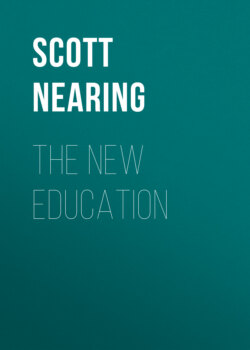Читать книгу The New Education - Scott Nearing - Страница 7
На сайте Литреса книга снята с продажи.
II Some Harsh Words from the Inside
ОглавлениеThe Commissioner of Education of New York State writes of the schools—[1] “A child is worse off in a graded school than in an ungraded one, if the work of a grade is not capable of some specific valuation, and if each added grade does not provide some added power. The first two grades run much to entertainment and amusement. The third and fourth grades repeat the work supposed to have been done in the first two. Too many unimportant and unrelated facts are taught. It is like the wearying orator who reels off stories only to amuse, seems incapable of choosing an incident to enforce a point, and makes no progress toward a logical conclusion.
“When but one-third of the children remain to the end of the elementary course, there is something the matter with the schools. When half of the men who are responsible for the business activities and who are guiding the political life of the country tell us that children from the elementary schools are not able to do definite things required in the world’s real affairs, there is something the matter with the schools. When work seeks workers, and young men and women are indifferent to it or do not know how to do it, there is something the matter with the schools.[2]
“There is a waste of time and productivity in all of the grades of the elementary schools.”[3] “The things that are weighing down the schools are the multiplicity of studies which are only informatory, the prolongation of branches so as to require many text-books, and the prolixity of treatment and illustration that will accommodate psychological theory and sustain pedagogical methods which have some basis of reason, but which have been most ingeniously overdone.”[4]
Former United States Commissioner of Education, E. E. Brown, is responsible for the statement that—“With all that we have done to secure regular and continuous attendance at school, it is still a mark of distinction when any city is able to keep even one-half of the pupils who are enrolled in its schools until they have passed even the seventh grade.”[5]
Here is an illustration, from the pen of a widely known educational expert, of the character of educational facilities in the well-to-do suburb of an Eastern city. After describing two of the newer schools (1911) Prof. Hanus continues—“The Maple Avenue School is too small for its school population, without a suitable office for the principal or a common room for the teachers, and, of course, very inadequately equipped for the work it ought to do; it ought, therefore, to be remodeled and added to without delay. The Chestnut Street School is old, gloomy, crowded, badly ventilated, and badly heated, has steep and narrow stairways, and it would be dangerous in case of fire. There are fire escapes, to be sure, but the access to some of these, though apparently easy in a fire drill, might be seriously inadequate and dangerous in case of haste or panic due to a real fire. In such a building sustained good work by teachers and pupils is very difficult. …
“The High School is miserably housed. It is dingy, badly lighted and badly ventilated. These defects constitute a serious menace to the physical welfare of pupils and teachers and, of course, seriously interfere with good work. It is crowded. Intercommunication is devious and inconvenient. The building is quite unfit for high school uses. Some of the school furniture is very poor; the physical and chemical classrooms and laboratories are very unsatisfactory, and its biological laboratory and equipment scarcely less so. The assembly room is too small, badly arranged, and badly furnished. There are no toilet-rooms for the teachers, and there is no common room. There is no satisfactory or adequate lunch-room. The library is in crowded quarters; the principal’s office space is altogether too small, and his private office almost derisively so.”[6]
Overwork in the school is said to be alarmingly prevalent. “It is generally recognized by physicians and educators to-day that many children in the schools are being seriously injured through nervous overstrain. Throughout the world there is a developing conviction that one of the most important duties of society is to determine how education may be carried on without depriving children of their health. It is probable that we are not requiring too much work of our pupils, but they are not accomplishing their tasks economically in respect to the expenditure of nervous energy. Some experiments made at home and abroad seem to indicate that children could accomplish as much intellectually, with far less dissipation of nervous energy, if they were in the schoolroom about one-half the time which they now spend there. German educators and physicians are convinced that a fundamental reform in this respect is needed. In fact, among school children we are learning the same lesson as among factory employees, viz., that high pressure and long hours are not economy but waste of time.”[7]
The school has been rendered monotonous. “We have worked for system till the public schools have become machines. It has been insistently proclaimed that all children must do things the same way for so long a time, that many of us have actually come to believe it. Children unborn are predestined to work after the same fashion that their grandparents did.”[8]
